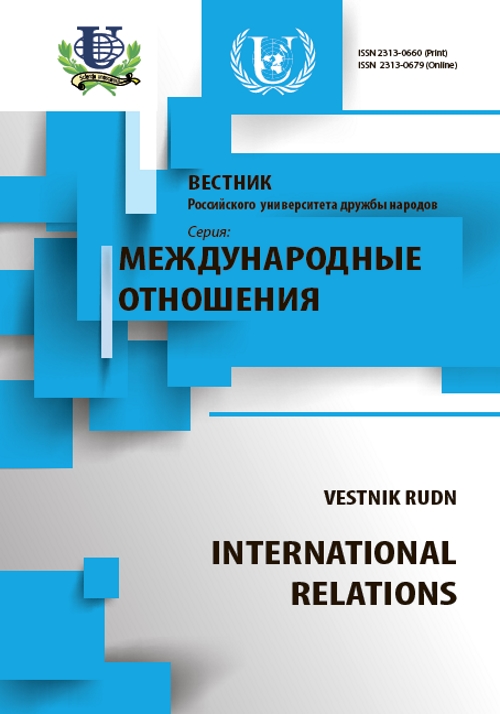The Evolution of the Conceptual Basis of the Foreign Policy of the PRC (1950-1990)
- 作者: Tsvyk AV1
-
隶属关系:
- Peoples’ Friendship University of Russia
- 期: 编号 1 (2015): East Asia: the rise of the PRC, development cooperation, partnership with the Russian Federation
- 页面: 53-59
- 栏目: Articles
- URL: https://journals.rudn.ru/international-relations/article/view/10369
如何引用文章
全文:
详细
This article is devoted to the analysis of the conceptual basis of the foreign policy of the PRC (1950-1990 period), the «Five Principles of Peaceful Coexistence», the «Three Worlds Theory», the concept of the «intermediate zones» as well as the «four modernizations» are under consideration. Since the foundation of the People's Republic of China in 1949 Asian state has passed several stages of the formation of an independent foreign policy, foreign policy, which not only allows to respond to the contemporary challenges of international relations, but also to gain a decisive voice in the world. And if in the early 50-ies China relies solely on foreign experience in this area, after ten years the government was forced to develop a new foreign policy concept, independent of the USSR and the USA. In the 70-ies of XX century, China not only transformed foreign policy into the tool of economic development promotion, but in fact became the leader of the «Third World». It is noteworthy that China still considers itself as developing country. After the collapse of the Soviet Union and the collapse of the bipolar system Beijing had to adjust its foreign policy settings once again, what eventually led to the strengthening of the desire to create a polycentric system of international relations. The study concludes that the modern concept of China's foreign policy was the natural result of the evolution of China's foreign policy doctrines since its inception.
作者简介
A Tsvyk
Peoples’ Friendship University of Russia
Email: a.tsvyk91@mail.ru
The Department of Theory And History Of International Relations
参考








